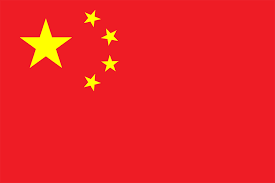On the 12th of april in 1927, Nationalist forces led by Chiang Kai-Shek carried out the Shanghai Massacre, attacking and disarming workers’ militias by force, resulting in more than 300 people being killed or wounded.
This incident marked the beginning of a campaign of violent suppression of Chinese communists by conservative factions in the Kuomintang, killing 300,000 people over the course of three years.
The Shanghai Massacre began before dawn, when nationalist troops began to attack district offices controlled by the union workers. Under an emergency decree, Chiang then ordered the 26th Army to disarm the workers’ militias.
The union workers organized a mass meeting denouncing Chiang Kai-shek the next day, and thousands of workers and students went to the headquarters of the 2nd Division of the 26th Army to protest. Soldiers opened fire, killing 100 and wounding many more.
This incident marked the beginning of a prolonged purge of communists from the Wuhan province, and the ensuing violence killed over 300,000 people in less than three years. Stalin offered his support, sending a telegram to the Chinese communists on June 1st, urging them to organize militarily against the state.
The events of April 1927 prompted the Comintern in Moscow to break ties with the Guomindang. It also triggered in-fighting between communists and left-wing nationalists in Wuhan that contributed to the collapse of Wang Jingwei’s government there. By late summer 1927, right-wing nationalists were ascendant in the Guomindang and Chiang Kai-Shek had emerged as the dominant republican leader of China.
Thousands of communists were forced underground in the cities or dispersed to rural areas. Some attempted to fight back. In response to the Shanghai massacre, on August 1st, 1927, the Communist Party launched an uprising in Nanchang against the Nationalist Wuhan government, which had previously been sympathetic to the Communists. The conflict meant that the Wuhan government and Chiang were once again aligned to crush the CCP.
This period is also acknowledged to have seen the emergence of the CCP’s “Red Army,” comprised of armed peasants and former nationalist soldiers. Despite KMT efforts to suppress the CCP forces, the communists successfully established control over many areas in southern China after attacks on cities such as Changsha, Shantou, and Guangzhou. In September, the leader of the Wuhan government, Wang Jingwei, was forced into exile.
By this point, three capitals were in effect across China: internationally-recognized Beijing, the KMT regime in Nanjing, and CCP-held Wuhan. This marked the start of a decade-long struggle known as the Ten-Year Civil War.
A large group in southern China led by Mao Zedong established a base in the remote Jinggang Mountains. A Kuomintang counterinsurgency campaign forced Mao and his group to relocate once again, and they moved into the border region between Jiangxi and Fujian provinces.
In order to rebuild the party’s strength, the 6th National Congress ordered these rural cadres to organize soviet governments. Mao’s group founded the Jiangxi Soviet, which became the largest and best administered soviet thanks to the number of Communist cadres from across the country that took refuge there. Although the Central Committee of the Communist Party was still underground in Shanghai during this period, the center of political gravity had begun to shift to Mao in Jiangxi.
Megathreads and spaces to hang out:
- 📀 Come listen to music and Watch movies with your fellow Hexbears nerd, in Cy.tube
- 🔥 Read and talk about a current topics in the News Megathread
- ⚔ Come talk in the New Weekly PoC thread
- ✨ Talk with fellow Trans comrades in the New Weekly Trans thread
reminders:
- 💚 You nerds can join specific comms to see posts about all sorts of topics
- 💙 Hexbear’s algorithm prioritizes comments over upbears
- 💜 Sorting by new you nerd
- 🌈 If you ever want to make your own megathread, you can reserve a spot here nerd
- 🐶 Join the unofficial Hexbear-adjacent Mastodon instance toots.matapacos.dog
Links To Resources (Aid and Theory):
Aid:
Theory:


have you finished it? i feel like developments were made to bring everything into Bethesda’s vision, which was always very selective in which themes they ran with vs disregarded
Yes, I actually started a second watch lol. It’s a good TV show in general, IMO. The acting across the board is very good. Walton Goggins steals the show as usual.
When I say that it’s the best video game adaptation, I mean that they managed to actually make it a good show. A lot of video games adaptations fail because they try to do too much fan service, especially towards trying to translate gameplay mechanics to the screen, which almost always fails. I thought they did a good job of dropping in references to the games/gameplay while still remembering that it’s a TV show and not a video game. It makes the HALO show look like doodoo ass in comparison (admittedly not hard to do but still).
i think it was decently produced for a video game tv show, its just grating that the elements i thought were most interesting in New Vegas/2 got factory reset to be more like Fallout 3 and a lesser extent 1. not totally finished yet so maybe that whole deal gets a little more satisfying, but i doubt it